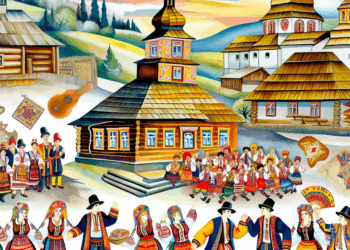Prospects of Chernivtsi’s Return to Romania: Historical, Cultural and Geopolitical Analysis
Introduction
Chernivtsi, nestled on the banks of the Prut River, is a unique mix of cultural influences formed over the centuries. The city, which has been close to Romania for most of its history, has remained part of Ukraine for the past 80 years. In the light of the current political context, the issue of Chernivtsi’s prospects of returning to Romania is of interest both among experts and the general public, which makes it necessary to analyse it in more depth.
Historical reasons
The historical ties between Chernivtsi and Romania can be traced back to the end of the 18th century, when the city became part of the Austrian Empire. In 1850, Chernivtsi received the status of the capital of the newly created Duchy of Bukovina, which in turn became part of the Austro-Hungarian Empire in 1867. This period had a significant impact on the development of the region, so that it was at this time that Chernivtsi began to actively develop its infrastructure, which later led to its status as a cultural capital.
After the First World War, in 1918, Bukovina was united with Romania, which strengthened the Romanian influence in the region. However, World War II and post-war changes led to the annexation of Northern Bukovina to the Soviet Union in 1940, and in 1944 Chernivtsi became part of the Ukrainian SSR. These events ended a long phase when another nationality, Ukrainians, became the dominant one in the region, which finally established Chernivtsi as a Ukrainian city.
Cultural connection
The cultural openness of Chernivtsi is quite great. The multi-ethnic population, consisting of Ukrainians, Romanians, Jews and other ethnic groups, has created a vibrant mosaic of cultures. Of particular importance is the Chernivtsi University, founded in 1875. This unique architectural ensemble, which is a UNESCO World Heritage Site, has been an important cultural and educational centre not only for Bukovina, but for the whole of Romania.
In the conditions of modern globalisation, interest in cultural ties between Chernivtsi and Romania has been revived. The many Romanian diasporas in the region strengthen these ties. Many locals are proud of their Romanian heritage and preserve their language, traditions and customs.
Expert opinion
The issue of Chernivtsi’s return to Romania is controversial among experts. Some believe that it could strengthen Romanian influence in the region and create new economic opportunities. Others point to the national identity of the majority of Chernivtsi residents, which today is linked to the Ukrainian state.
According to Anton P. Petrescu, professor of historical sciences at UNESCO, “historical memory is not fading. Nevertheless, for the majority of Chernivtsi residents, belonging to Ukraine is a common identity, and they do not seek a return to Romanian control.” Similarly, Romanian historian Ioanna D. Serban notes that “the restoration of historical borders should take place in a peaceful context, relying on the opinions of the citizens themselves”.
Legal aspects
From a legal point of view, the issue of Chernivtsi’s return to Romania is quite unambiguous. According to international law, boundary changes are only possible by agreement of all parties. The existing Ukrainian legislation also protects the territorial integrity of the country.
In addition, there are international conventions, such as the Charter on Regional or Minority Languages, which enshrine the rights of national minorities. Romania is already a member of the European Union and therefore its demands for border changes should be harmonised with European norms.
Geopolitical circumstances
The current geopolitical situation is such that the question of Chernivtsi’s belonging could be perceived as an attempt to disrupt stability in the region. Attempts to change the borders could increase tensions between Ukraine and Romania, which is not in the interests of either country. In recent years, both countries have been striving to improve relations and this should remain a priority.
Russia’s influence on the situation is also worth mentioning. The presence of a significant number of Romanians in the region can be used by some geopolitical players to increase their importance in the context of the catastrophe in Ukraine. Therefore, it is important that the discussion on the question of Chernivtsi’s belonging should be conducted in a peaceful and constructive manner that does not allow the use of force.
Conclusion
Despite Chernivtsi’s rich historical and cultural connection with Romania, the prospect of its return to the neighbouring state looks very uncertain. The dynamics of modern society, expert opinions and legal legitimacy create a certain paradox: there is an interest in cultural and historical ties, but the real history of relations between the peoples determines what is concerning.
So, the approach to the issue should be based on dialogue and respect for the opinion of the inhabitants of the region. This will allow not only to preserve the warmth of cultural ties, but also to cooperate in modern conditions, mutually enriching the civilisations of the two countries. Ultimately, the future of Chernivtsi should be decided taking into account the needs and interests of local residents, which will ensure their stable existence in a dynamically developing world.








